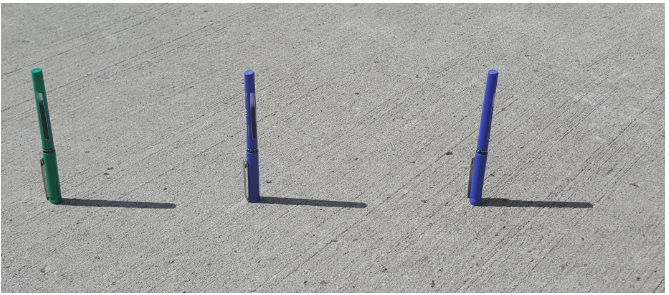2.4.1: La sombra sabe
- Page ID
- 118648
\( \newcommand{\vecs}[1]{\overset { \scriptstyle \rightharpoonup} {\mathbf{#1}} } \) \( \newcommand{\vecd}[1]{\overset{-\!-\!\rightharpoonup}{\vphantom{a}\smash {#1}}} \)\(\newcommand{\id}{\mathrm{id}}\) \( \newcommand{\Span}{\mathrm{span}}\) \( \newcommand{\kernel}{\mathrm{null}\,}\) \( \newcommand{\range}{\mathrm{range}\,}\) \( \newcommand{\RealPart}{\mathrm{Re}}\) \( \newcommand{\ImaginaryPart}{\mathrm{Im}}\) \( \newcommand{\Argument}{\mathrm{Arg}}\) \( \newcommand{\norm}[1]{\| #1 \|}\) \( \newcommand{\inner}[2]{\langle #1, #2 \rangle}\) \( \newcommand{\Span}{\mathrm{span}}\) \(\newcommand{\id}{\mathrm{id}}\) \( \newcommand{\Span}{\mathrm{span}}\) \( \newcommand{\kernel}{\mathrm{null}\,}\) \( \newcommand{\range}{\mathrm{range}\,}\) \( \newcommand{\RealPart}{\mathrm{Re}}\) \( \newcommand{\ImaginaryPart}{\mathrm{Im}}\) \( \newcommand{\Argument}{\mathrm{Arg}}\) \( \newcommand{\norm}[1]{\| #1 \|}\) \( \newcommand{\inner}[2]{\langle #1, #2 \rangle}\) \( \newcommand{\Span}{\mathrm{span}}\)\(\newcommand{\AA}{\unicode[.8,0]{x212B}}\)
Lección
Usemos sombras para encontrar las alturas de un objeto.
Ejercicio\(\PageIndex{1}\): Notice and Wonder: Long Shadows and Short Shadows
¿Qué notas? ¿Qué te preguntas?


Ejercicio\(\PageIndex{2}\): Objects and Shadows

Aquí algunas medidas que se tomaron cuando se tomó la foto. Era imposible medir directamente la altura del poste de luz, por lo que esa celda queda en blanco.
| altura (pulgadas) | Largo de sombra (pulgadas) | |
|---|---|---|
| niño más joven | 43 | 29 |
| hombre | 72 | 48 |
| niño mayor | 51 | 34 |
| farolas | 114 |
- ¿Qué relaciones observas entre la altura de un objeto y la longitud de su sombra?
- Haz una conjetura sobre la altura de la farola y explica tu pensamiento.
Ejercicio\(\PageIndex{3}\): Justifying the Relationship
Explique por qué la relación entre la altura de estos objetos y la longitud de sus sombras es aproximadamente proporcional.

Ejercicio\(\PageIndex{4}\): The Height of a Tall Object
- Dirígete afuera. Asegúrate de que sea un día soleado y te lleves un aparato medidor (como una cinta métrica o una barra de medidor) así como un lápiz y un poco de papel.
- Elija un objeto cuya altura sea demasiado grande para medirla directamente. Tu profesor puede asignarte un objeto.
- ¡Usa lo que has aprendido para averiguar la altura del objeto! Explica o muestra tu razonamiento.


